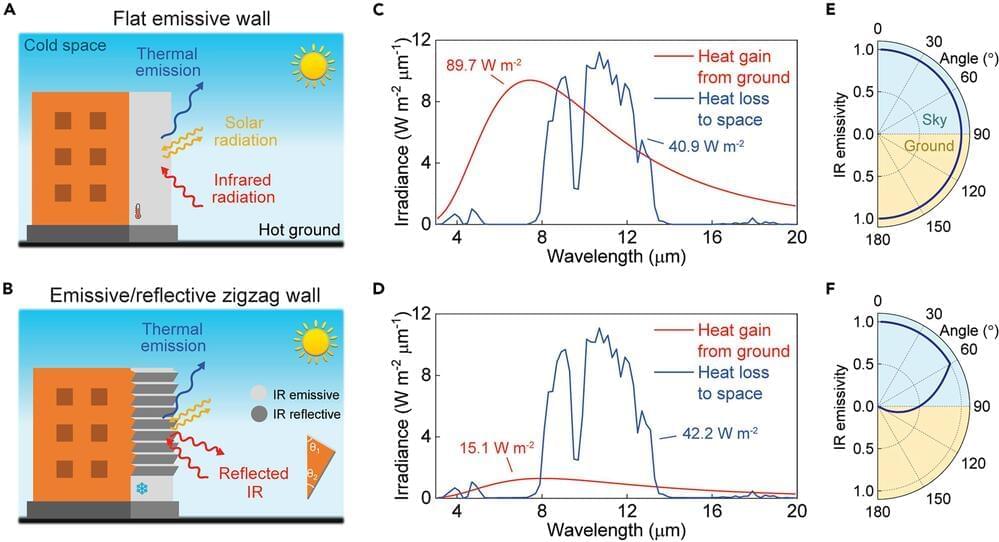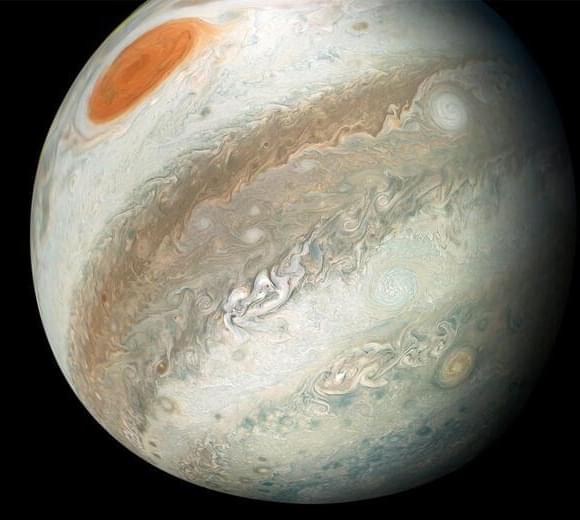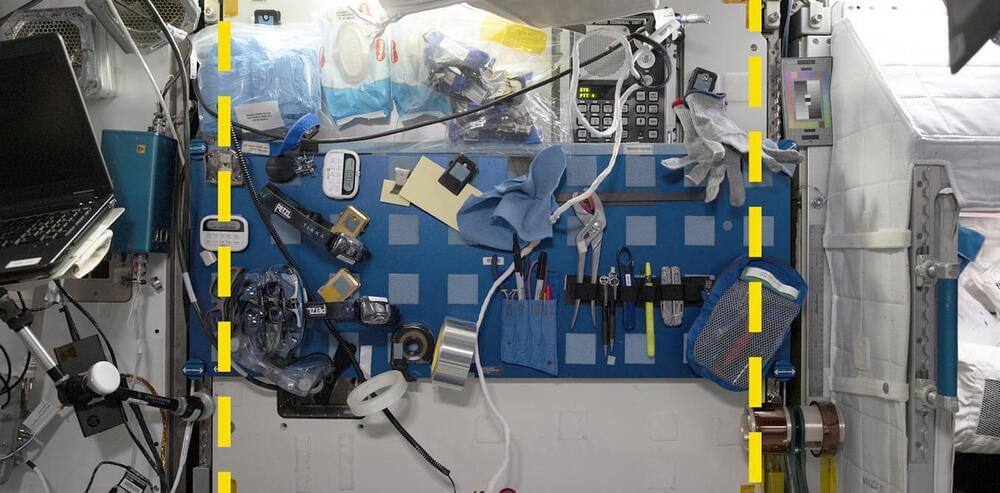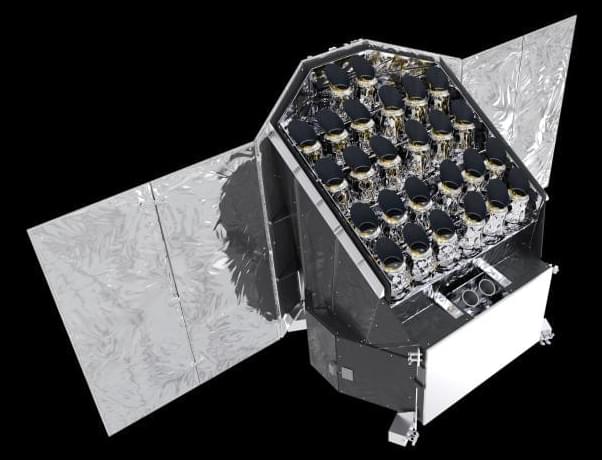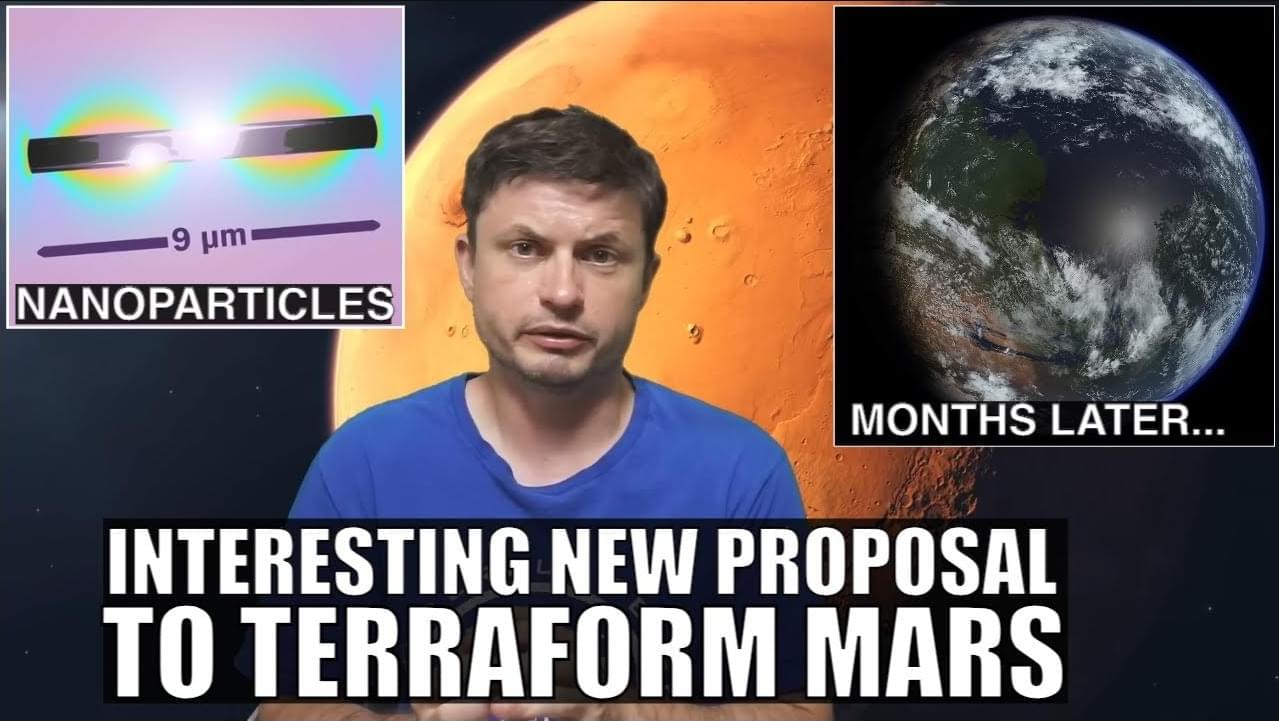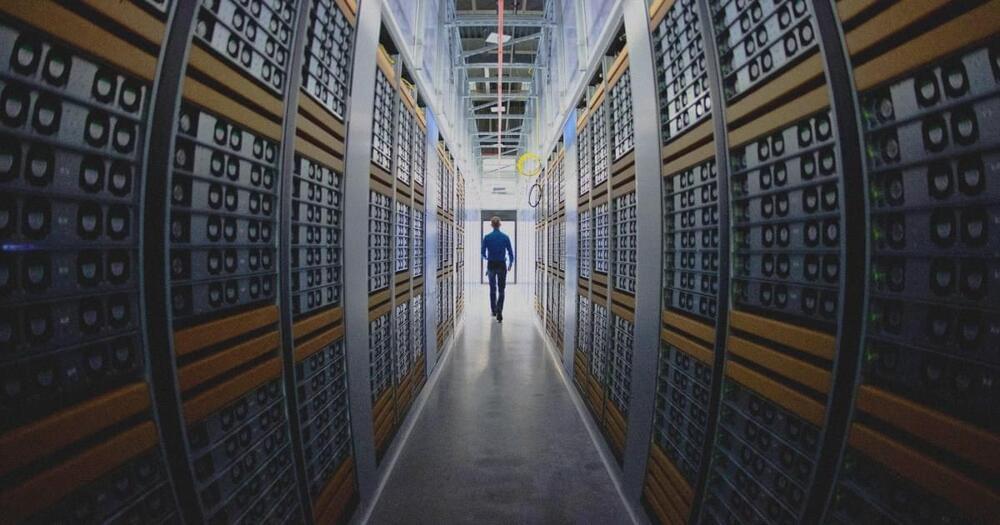Aug 12, 2024
Using corrugated wall coverings to passively cool buildings
Posted by Shailesh Prasad in categories: physics, space
A team of applied physicists at Columbia University, working with a colleague from Henry M. Gunn High School, and another from the University of California, Los Angeles, has found that using corrugated siding on outdoor building walls can passively reduce wall temperatures.
In their paper published in the journal Nexus, the group describes how they added corrugated siding to a small test building and found that doing so lowered the wall temperatures.
Prior research has shown that covering the tops of buildings with radiative cooling materials can reduce the amount of heat that makes its way inside by up to 20%. This is because they are made in such a way as to reflect sunlight and radiate heat into outer space.
